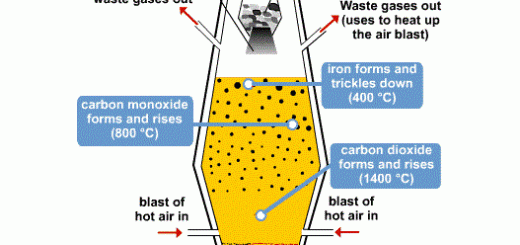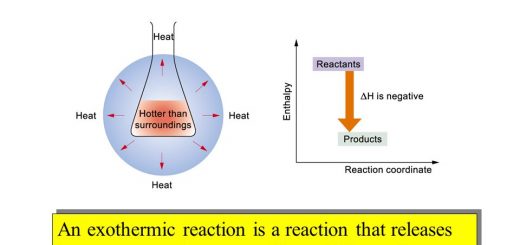Electrochemistry, Electrochemical cells, Galvanic Cell or Voltaic Cell importance and structure
Electrochemistry is a branch which is interested in studying the exchange conversion of chemical energy and electrical energy through oxidation & reduction, Electrochemistry means chemistry of electrons because the electrons transfer from one point to another, The reactions in electrochemistry are called oxidation-reduction reactions, These reactions occur in equipment called electrochemical cells in which electric energy is converted to chemical energy, and vice versa.
Electrochemical cells
Electrochemical cells such as Electrolytic cell (needs outside electric source) and Galvanic cell (don’t need outside electric source), any cell consists of electrolyte and electrodes, electrolytes (conductors) are substances that conduct electricity, Electrodes are wires or plates that are used to conduct the electric current in the electrolyte.
Types of Electrolytes:
- Electronic metallic conductors: Materials that conduct the electric current through the migration of its electrons, They are not accompanied with the transfer of matter “atoms”, all metals such as Cu, Zn, Ni & alloys.
- Liquid conductors: Materials that conduct electric current through migration of its ions, They are accompanied with the transfer of matter “ions”.
Types of liquid conductors:
- The electrolyte of pure substances such as molten salts as molten NaCl.
- The electrolyte of solutions, such as solution of acids, bases or salts “NaCl” solution, HCl solution and NaOH solution.
Types of the electrodes:
- Inert Electrode does not share in the oxidation–reduction process, which takes place in the electrolytic cell, such as platinum and carbon, It allows the electrons to come out or enter the cell.
- Metal Electrode is a metal dipped in an electrolyte contains its ions where the metal dissolves in the electrolyte forming positive ions, such as Ag/AgNO3 and Cu/CuSO4, It shares in the oxidation-reduction process which takes place in the electrochemical cells.
Oxidation-reduction reactions (Redox) is a type of chemical reactions in which electrons transfer from one of the reacting substances to another in the same chemical reaction.
Galvanic Cell or Voltaic Cell
The experiment represents one of oxidation-reduction reduction: Dip a Zn-sheet in blue copper sulphate solution, You will notice red copper metal precipitated on the surface of zinc sheet, while zn-metal dissolves in the solution, If this continued for long period, the blue colour of copper sulphate solution decreases and becomes colourless and the dissolution of (Zn) increases.
Zn + Cu2+→ Zn2++ Cu0
We observe that this reaction consists of two half-reactions:
Oxidation reaction: In this reaction zinc-atom (Zn) loses two electrons and converts to zinc ion (Zn2+) dissolves and defuses in the solution.
Zn0 → Zn2+ + 2e−
Reduction reaction: In this reaction copper ion (Cu2+) in the electrolytic solution accepts two electrons (come from the Zn-half cell) and converts to copper metal (Cu0) deposited on the surface of the Zn-sheet.
Cu2+ + 2e−→ Cu0
Galvanic Cells are a type of electric cells from which we can obtain electric current as a result of a spontaneous (oxidation-reduction) reaction, Galvanic Cells are systems in which chemical (thermal) energy is changed into electrical energy in the absence of an external electric current.
Galvani name is attached to a system of electric cells to get the electric current as a result of a spontaneous (oxidation-reduction) reaction, Electrolytic cells are electric cells in which the energy from an external source is converted to chemical energy used through a non-spontaneous (oxidation-reduction) reaction.
Daniel Cell is an example for the galvanic cell in which electric current is obtained from a spontaneous (oxidation-reduction) reaction, On connecting the two electrodes (Zn and Cu by a wire) a spontaneous reaction takes place, The difference of the electric potentials of the two half cells is measured by an instrument called the voltmeter.
The anode (Oxidation at Zn electrode): Zn0 → Zn2+ + 2e−
The cathode (Reduction reaction at the Cu electrode): Cu2+ + 2e−→ Cu0
The total reaction occurring in the cell is: Zn0 + Cu2+→ Zn2++ Cu0
The cell diagram: Zn0 / Zn2+ // Cu2+ / Cu0
Electromotive force = Reduction potential of cathode − Reduction potential of anode
The electric lamp illuminates showing that an electric current is passed through the wire due to the flow of electrons, As the reaction continues, Zinc half cell will be saturated with Zn2+ ions, Copper half cell will be saturated with SO4−2 ions, To overcome this problem, a porous U shaped tube is used which is called salt bridge.
Salt bridge in the galvanic cell is a glass U-shaped tube filled with a strong electrolytic solution like sodium sulphate (Na2SO4), its ions don’t react with the ions present in the two half-cells as well as with the electrode materials of the galvanic cells.
Salt bridge connects between the solutions of the two-cells indirectly, It is used to neutralize the excess of positive ions in anode half-cell and negative ions in cathode half-cell as a result of the oxidation and reduction reactions and prevent the formation of potential difference in the solutions of the two half cells, and forms the potential difference between the two electrodes in the two solutions, so, the current will continue to flow.
In Galvanic cell, the anode (−) and cathode (+), Flow of the electric current is stopped between the two half-cells when:
- Zinc metal in anode half cell is dissolved completely.
- The concentration of Cu2+ in cathode half cell is decreased to the lower extent.
- The absence of salt bridge leads to stopping the oxidation and reduction reactions and consequently stopping the flow of electric current in the external wire connecting between the two half-cells.
- Dip Zn in CuSO4 or Dip Cu in ZnSO4.
The diagram of galvanic cell (symbolic expression) is the simplest method to express the components of two half cells in galvanic cell and the reaction occurred in it, It is expressed as follows:
- The left side represents the half-cell at the anode which the oxidation reaction takes place, and separating between two states of oxidation by a curved line.
- The right side represents the half-cell at the cathode which the reduction reaction takes place and separating between two states of reduction by a curved line.
- The separating between two sides of half-cells by two curved parallel lines // in case of using the salt bridge or vertical dashed line in case of using a porous barrier.
Example the galvanic cell at which the two following reactions occurred:
Fe0 → Fe2+ + 2e−
2 Ag+ + 2e−→ 2 Ag0
Fe0 / Fe2+ // 2 Ag+ / 2 Ag0
In Galvanic cell, the anode is the negative electrode while, the cathode is positive electrode because the anode loses electrons, so, it is the source of electrons, while the cathode is positive electrode due to it gains electrons.
The absence of salt bridge leads to stopping the flow of the electric current in the galvanic cell because the oxidation-reduction is stopped, so, the electric current in the conducted metal wire connecting between the two half-cells is stopped.
As the Daniel cell operates, the concentration of the Cu2+ ions decreases and mass of the copper electrode increases because the Cu2+ ions reduce by gaining the electrons resulting from the oxidation process to form Cu, which deposits on the Cu electrode.
It is important that the copper ions not to be in contact with zinc (Zn) electrode in the Daniel cell because the oxidation and reductions take place on the surface of Zn electrode, so, the electrons don’t flow in the electrical circuit and consequently not an electric current is generated.
As the Daniel cell operates, the mass of the Zn electrode decreases and the concentration of Zn2+ ions increases because Zn in Daniel cell is oxidized to Zn2+ ions, which dissolves in the solution, Zinc plate is the anode, while copper plate is the cathode because the oxidation potential of Zn is higher than oxidation potential of Cu, so, it is easy to be oxidized.
The salt bridge is used in the galvanic cell because it connects indirectly between the solutions of the two half-cells and neutralizes the excess of both the positive and negative ions whose high concentration in the solution of the two half-cells, The two half cells, that will be connected to form the galvanic cell must be different in their ability for oxidation and reduction to allow the spontaneous reaction between the two half cells to take place.
Ionization of water, Hydrogen Exponent (pH value), Solubility product & Hydrolysis of salt solutions



